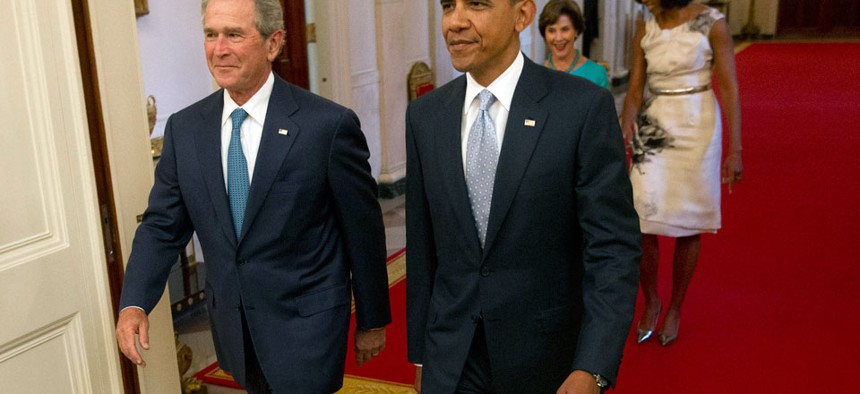Sequester’s Impact on Regulators Remains a Subject of Debate
Liberals fault academic report calling effects 'modest' as an ideological attack by free-marketers.
Analysts from the right and the left are offering widely varying assessments of whether this year’s automatic spending cuts are eating into the Obama administration’s regulatory powers, be it measured in overall spending or staffing.
A widely noted report last month from professors at regulatory centers at Washington University at St. Louis and The George Washington University concluded that sequestration’s impact on regulatory agencies has been modest.
“Outlays devoted to economic regulatory activities are increasing at a faster rate than those aimed at social regulatory activities, reversing a trend that began in the 1970s away from economic regulation of private-sector activities,” wrote Susan Dudley and Melinda Warren in tracking regulatory spending for 75 agencies from 1960-2014. Fiscal 2013 “outlays do not appear to be hard hit by the sequester, and are estimated to be 0.9 percent higher than in 2012, suggesting that regulatory agencies were able to expend prior-year obligations in 2013,” they wrote.
Evaluating such agencies as the Securities and Exchange Commission, Consumer Financial Protection Bureau, Comptroller of the Currency, Patent and Trademark Office, and Food and Drug Administration, they asserted that the number of regulatory personnel since 2010 has grown by more than 13,000, or 4.9 percent. In addition, the regulators’ budget for fiscal 2013 and budget submission for fiscal 2014 indicate “modest increases in both outlays and staffing,” the report said.
But the “rise” in regulatory activity appeared in the George W. Bush administration as well as under Obama, the researchers’ data showed. “The first decade of the 21st century witnessed a larger rate of increase in the outlays of regulatory agencies than the previous two decades, with a 62.7percent increase between fiscal years 2000 and 2010. In fiscal 2010, the on-budget costs of regulation were $18 billion greater than at the start of the decade, almost double the inflation-adjusted dollar growth in spending of any prior decade,” the scholars wrote.
A rebuttal to the report was released on Thursday by Nick Schwellenbach, an analyst at the Center for Effective Government, who called the study “mainly a political document meant to misinform the public about the true state of the regulatory agencies’ budgets.”
Schwellenbach noted that regulatory agencies under sequestration have had their budgets trimmed by 5.1 percent, and that such cuts will be deeper in fiscal 2014 if the automatic cuts are allowed to continue. “For the most part, the sequester has cut federal regulatory agencies’ budgets (one notable exception is the Consumer Financial Protection Bureau, which is a new agency and is just getting off the ground),” he wrote. “The impacts have not been obvious because most agencies have used reprogramming authority to prioritize their activities that could lead to short-term problems at the expense of programs that have longer-term implications.”
He gave the example of the Occupational Safety and Health Administration, which has moved funds away from assistance to help companies avoid compliance violations. Those funds are now going toward preventing cuts in spending on after-the-fact enforcement.
Schwellenbach also faulted Dudley and Warren for not placing the growth in agency budgets in the context of overall economic growth, and for lumping the Homeland Security Department in with the more purely regulatory agencies during a period when spending on protecting the homeland has grown most rapidly.




